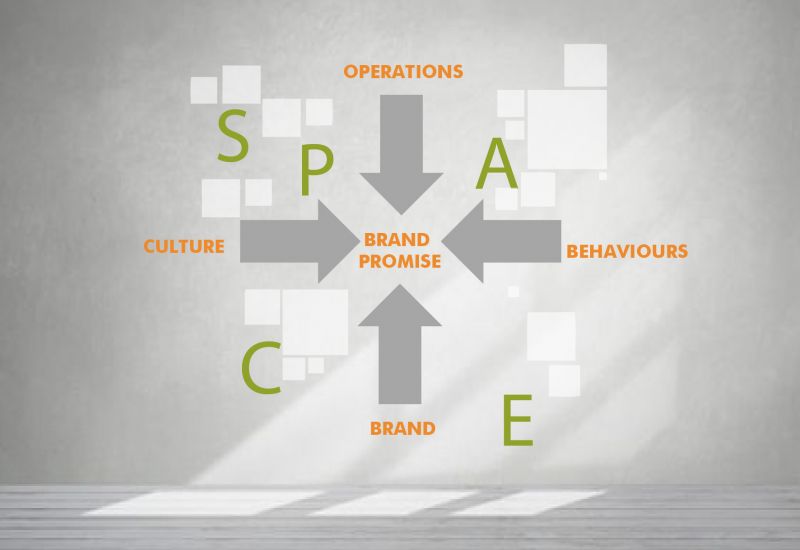Fulfilling the Brand Promise

When a client reaches for the door of a reception, they may have a preconception of the company. The reception and all the proceeding touch points a client (or any visitor) experiences in their journey through the space is an opportunity to set their preconception straight. One of the most effective touch points to reinforce the brand is through human interface. Having protocols in place of how employees treat customers in these face-to-face interactions is an operative way to convey your brand and should not be over-looked. However, the design of the physical space should support employees in easily acting out these behaviors and fulfilling the brand promise. The design can also provide other effective touch points to help form the overall experience.
When a client reaches for the door of a reception, they may have a preconception of the company. The reception and all the proceeding touch points a client (or any visitor) experiences in their journey through the space is an opportunity to set their preconception straight. One of the most effective touch points to reinforce the brand is through human interface. Having protocols in place of how employees treat customers in these face-to-face interactions is an operative way to convey your brand and should not be over-looked. However, the design of the physical space should support employees in easily acting out these behaviors and fulfilling the brand promise. The design can also provide other effective touch points to help form the overall experience.
Behavioural protocols, spatial and functional design needs vary per organisation, so there is not an explicit, easy answer for how to create an experience which evokes your brand. However we have created a list of questions and tips as thought starters to help you gain clarity on how to provide the best brand experience for your clients through leveraging behavioural protocols and the physical space.
- How do you want your clients to feel upon visiting your space? Do current protocols for how to interact with clients reflect this and are they representative of your brand and culture?
- What do your clients want and value? How is this integrated into the space and delivered through customer service? For example, if confidentiality is one of your organisations most important promises, escorting visitors quickly through the reception may be a top priority.
- How does the physical space promote the behaviors that allow employees to deliver their brand promise?
- What touch points have an impact on the experience? There are a variety of details to consider which will leave an impression about the organisation. These include:
- The way in which the visitor is greeted
- The way in which employees present themselves
- Process of checking in. If there isn't a receptionist, is the process intuitive?
- Type of seating that is provided
- Strategy of how information about the company is displayed, etc.
- Comfortable and consistent temperature
- Are visitors escorted through the space? In absence of a receptionist to escort visitors through, is check-in, navigation, and occupation easy?
- Are boundaries or "zoning" to create a hierarchy of space types clearly established throughout the space? This is especially applicable within an open plan for visitors to understand which spaces are accessible to them and the proper etiquette for them. Establishing boundaries is equally important for employees.
- Low - most public space, (people are always welcome)
- Medium - look before interrupting
- High - most private spaces, (think twice before disturbing)
- Do lighting levels alter within the space to enhance different experiences and space types? People naturally are attracted to well lit, bright spaces. Where possible, increase light levels in the most public zones. Increase the contrast between the more private spaces.


